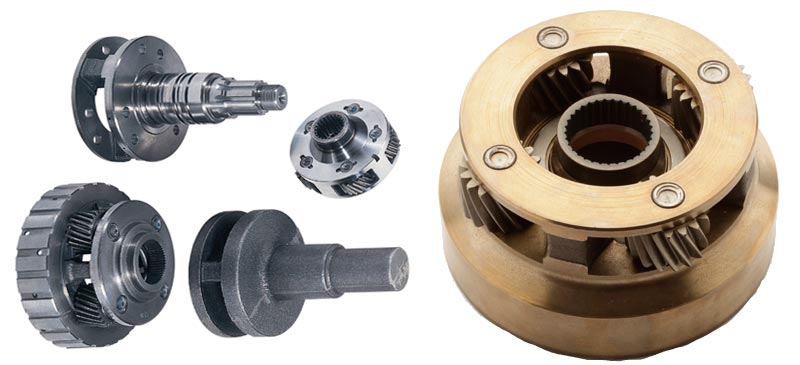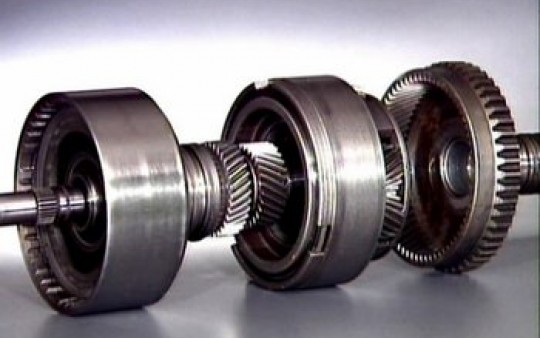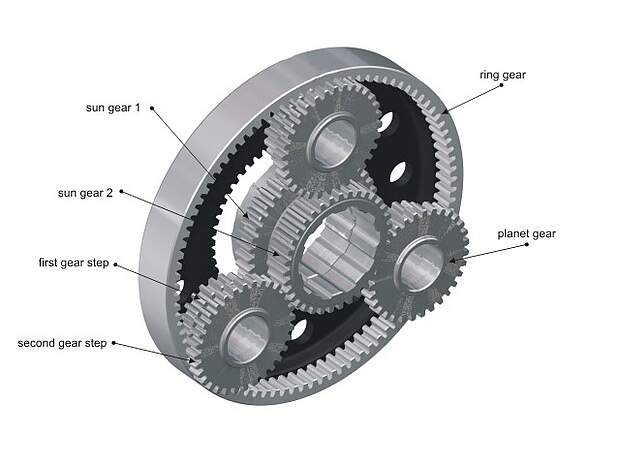Product Description
Inline Bevel Helical Reduction CHINAMFG Cmg Gear Geared Motors Bearing Epu CHINAMFG Epicyclic High Precision Gearing Reducer
Product Description
A high precision gearing reducer is a gearbox designed to provide accurate and precise motion control in various applications. The gearbox typically consists of 1 or more sets of gears, which are used to transmit power and reduce the speed of the input shaft to the desired output speed.
High-precision gearing reducers are commonly used in applications where precise motion control is critical, such as in robotics, CNC machines, and other manufacturing equipment. They can be used to control the speed and position of moving parts with high accuracy, which can help to improve the quality and consistency of products and reduce waste.
One of the key features of high-precision gear reducers is their ability to provide high torque at low speeds. This can be particularly important in applications where heavy loads need to be moved or where high levels of force are required.
Another important feature of high-precision gearing reducers is their ability to operate with low backlash. Backlash is the amount of play or clearance between the gears in a gearbox, which can affect the accuracy and precision of the output. High-precision gearing reducers can provide more accurate and repeatable motion control by minimizing backlash.
Overall, high precision gearing reducers are essential in many industrial and manufacturing applications. They provide the accurate and precise motion control required for high-quality production and can help to improve efficiency and reduce waste.
/* January 22, 2571 19:08:37 */!function(){function s(e,r){var a,o={};try{e&&e.split(“,”).forEach(function(e,t){e&&(a=e.match(/(.*?):(.*)$/))&&1
| Application: | Motor, Electric Cars, Motorcycle, Machinery, Marine, Agricultural Machinery, Car |
|---|---|
| Hardness: | Hardened Tooth Surface |
| Installation: | Horizontal Type |
| Layout: | Coaxial |
| Step: | Three-Step |
| Type: | Agricultural Gearbox |
| Samples: |
US$ 9999/Piece
1 Piece(Min.Order) | |
|---|

Can you explain how an epicyclic gear system handles torque distribution?
An epicyclic gear system, also known as a planetary gear system, is designed to handle torque distribution in an efficient and effective manner. Here’s a detailed explanation:
An epicyclic gear system consists of three main components: the sun gear, planet gears, and the ring gear. Each of these components plays a specific role in torque distribution:
1. Sun Gear:
The sun gear is the central gear in the system and receives torque input. It is typically connected to the power source, such as an engine or motor. The sun gear transfers torque to the other components of the system.
2. Planet Gears:
The planet gears are mounted on a carrier and rotate around the sun gear. They mesh with both the sun gear and the ring gear. The planet gears distribute torque between the sun gear and the ring gear, facilitating power transmission.
3. Ring Gear:
The ring gear is the outermost gear in the system and has internal teeth that engage with the planet gears. It is typically connected to the output shaft and transfers torque to the desired output, such as wheels in a vehicle or a generator in a wind turbine.
Here’s how the torque distribution works in an epicyclic gear system:
1. Torque Input:
The torque input is applied to the sun gear. As the sun gear rotates, it transfers torque to the planet gears.
2. Torque Distribution:
The planet gears receive torque from the sun gear and distribute it between the sun gear and the ring gear. Since the planet gears are meshed with both the sun gear and the ring gear, torque is transmitted from the sun gear to the ring gear through the planet gears.
3. Torque Multiplication or Reduction:
The torque distribution in an epicyclic gear system can be configured to provide either torque multiplication or torque reduction, depending on the arrangement of the gears. For example, if the sun gear is held stationary, the planet gears can rotate around the sun gear, causing the ring gear to rotate at a higher speed with increased torque. This configuration provides torque multiplication. Conversely, if the ring gear is held stationary, the sun gear can rotate, causing the planet gears to rotate in the opposite direction, resulting in torque reduction.
4. Even Torque Distribution:
An advantage of using an epicyclic gear system is that it facilitates even torque distribution among the planet gears. The multiple planet gears share the load, which helps distribute torque evenly across the gear system. This even torque distribution minimizes stress concentration on individual gear teeth, reducing wear and improving overall durability and reliability.
In summary, an epicyclic gear system handles torque distribution by transferring torque from the sun gear to the planet gears, which then distribute it between the sun gear and the ring gear. This configuration allows for torque multiplication or reduction and ensures even torque distribution among the planet gears, resulting in efficient power transmission and reliable operation.

How do epicyclic gears contribute to reducing gear wear and noise?
Epicyclic gears, also known as planetary gears, offer several advantages that contribute to reducing gear wear and noise. Here’s a detailed explanation:
1. Load Distribution:
The arrangement of multiple planet gears in an epicyclic gear system helps distribute the load evenly across the gear teeth. This load distribution minimizes stress concentration on individual gear teeth, reducing the risk of wear and fatigue failure. By sharing the load, epicyclic gears can handle higher torque levels while reducing the wear on specific gear teeth.
2. Increased Tooth Contact Ratio:
Epicyclic gears typically have a higher tooth contact ratio compared to other gear types, such as spur or helical gears. The tooth contact ratio refers to the number of teeth in contact at any given time. A higher tooth contact ratio results in a smoother distribution of load and reduces localized contact stresses. This helps to minimize wear and noise generation during gear operation.
3. Balanced Loading:
The design of epicyclic gears allows for balanced loading of the gear teeth. The load is distributed among multiple planet gears, and each gear tooth engages with multiple teeth on both the sun gear and the ring gear simultaneously. This balanced loading helps to minimize tooth deflection and backlash, reducing wear and noise generation.
4. Lubrication:
Epicyclic gears benefit from effective lubrication due to their design. The gear teeth are constantly immersed in the lubricant, which helps reduce friction and wear. Proper lubrication also helps to dampen vibrations and reduce noise generated during gear operation.
5. Controlled Speed and Load Transitions:
Epicyclic gears can provide smooth speed and load transitions due to their ability to change gear ratios. When transitioning from one gear ratio to another, the gear engagement can be carefully controlled to minimize sudden shocks or impacts, which can contribute to wear and noise. The controlled speed and load transitions in epicyclic gears help reduce gear wear and noise levels.
6. Precision Manufacturing:
Epicyclic gears are often manufactured with high precision to ensure accurate gear meshing and minimize manufacturing errors. Precise gear manufacturing helps to maintain proper alignment and minimize tooth misalignment, which can lead to increased wear and noise.
In summary, the load distribution, increased tooth contact ratio, balanced loading, lubrication, controlled speed and load transitions, and precision manufacturing of epicyclic gears all contribute to reducing gear wear and noise. These factors make epicyclic gears a favorable choice in applications where minimizing wear and noise levels is important.

What is an epicyclic gear and how does it function?
An epicyclic gear, also known as a planetary gear, is a gear system that consists of one or more outer gears, an inner gear, and a central gear, known as a sun gear. Here’s a detailed explanation of how it functions:
1. Gear Arrangement:
In an epicyclic gear system, the sun gear is located at the center and is surrounded by multiple outer gears, also called planet gears. The planet gears are typically mounted on a carrier, which allows them to rotate around the central sun gear.
2. Gear Engagement:
The teeth of the planet gears mesh with both the sun gear and an outer ring gear, also known as the annular gear. The annular gear has internal teeth that engage with the planet gears and external teeth that provide the outer boundary of the gear system.
3. Input and Output:
The input and output connections can be achieved in different ways depending on the design. Typically, the sun gear serves as the input shaft, while the carrier or the annular gear acts as the output shaft. The rotation of the input shaft (sun gear) causes the planet gears to orbit around it and rotate, resulting in the output shaft’s motion.
4. Gear Ratios:
An essential feature of epicyclic gears is their ability to provide different gear ratios by changing the arrangement of the gears. By holding one component stationary, such as fixing the annular gear or the carrier, and driving another component, the gear system can achieve various speed and torque combinations.
5. Gear Functions:
Epicyclic gears have several useful functions in mechanical systems, including:
- Speed reduction: By fixing the sun gear and rotating the carrier or the annular gear, the output speed can be reduced compared to the input speed.
- Speed increase: By fixing the carrier or the annular gear and rotating the sun gear, the output speed can be increased compared to the input speed.
- Directional changes: Changing the gear engagement arrangement allows reversing the direction of rotation between the input and output shafts.
- Torque multiplication: By utilizing the gear ratios, an epicyclic gear system can multiply or divide the torque between the input and output shafts, providing mechanical advantage.
- Braking: By holding specific components, such as the sun gear or the carrier, the gear system can act as a brake, preventing rotation or controlling the speed of the output shaft.
Epicyclic gears find applications in various mechanical systems, including automotive transmissions, gearboxes, power tools, and robotics, due to their compact size, versatility, and ability to achieve multiple gear ratios within a single gear system.


editor by CX 2024-04-08